After brewing for 24 hours, and scooping the largest debris (un-composted bits of organic "stuff") off the surface of the tea, it's ready to be filtered:
I use a large plastic funnel stuffed with tule to act as a filter. Simply pouring the tea into the funnel catches the debris in the tule making the tea clean enough to go in a watering can:
I then poured the tea into a large watering can, diluted with water from the rain barrels:
Compost tea can serve three purposes: One, poured directly over the plants it provides a microbial coating on leaves that provides a defense against airborne disease spores; two, it serves as a foliar feeding source for plants to absorb nutrients through the leaf pours (stomata); and three, as a soil drench, tea adds microbial life and nutrients to the soil to aid in nutrient uptake through the roots. These pictures are of drenching young transplants:
For soil drenching, I used a different watering can, filling it first with rain water from the rain barrels. I love having access to this water from the barrels!
I then added tea to this water making a diluted mix to soak the roots of the cabbage, cauliflower, Brussels sprouts, broccoli, and collards:
A few other pictures:
Daniel and I were agreeing the other day on what troopers the Swiss chard plants are. We both have plants that have been producing since last spring, going through the summer without bolting (going to seed). They are truly prolific staples of the home garden: (I tucked a couple cauliflower plants in around this chard)
My Russian kale plants, after surviving two severe attacks by the cabbage butterfly caterpillars, are re-sprouting for a third try this fall. The standard (organically approved) defense against these and other caterpillars on brassica plants is a bacteria called bacillus thuringiensis. When it is sprayed on the leaves of plants, caterpillars ingest the bacteria and it causes their demise in 1-2 days. The bacteria is harmless to humans or pets. I didn't have any BT on hand earlier this summer to protect the brassicas, but have some for the fall season in case the caterpillars show up again:
Finally, I don't think I've shown pics of my pineapple plants. I was at a grocery store back in the spring and saw a deli guy slicing the tops off some pineapples before chopping the fruit up for sale in the deli. I asked him if I could have the tops—brought them home and planted the two nicest ones. They were about a fourth this size when I planted them. Don't know what the outcome will be, but I'll probably try to keep them indoors through the winter. They have become beautiful plants:
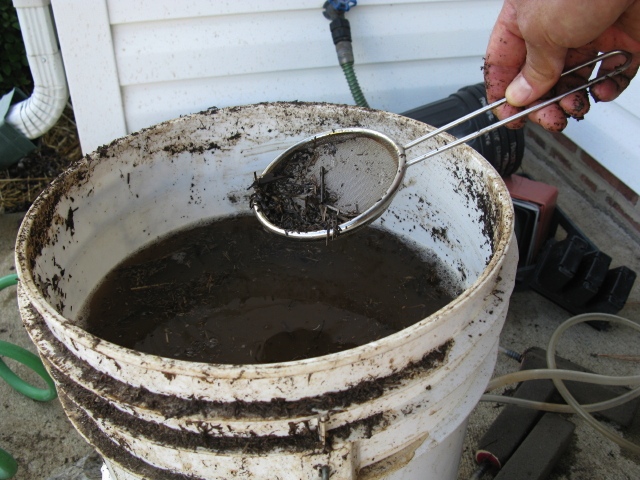
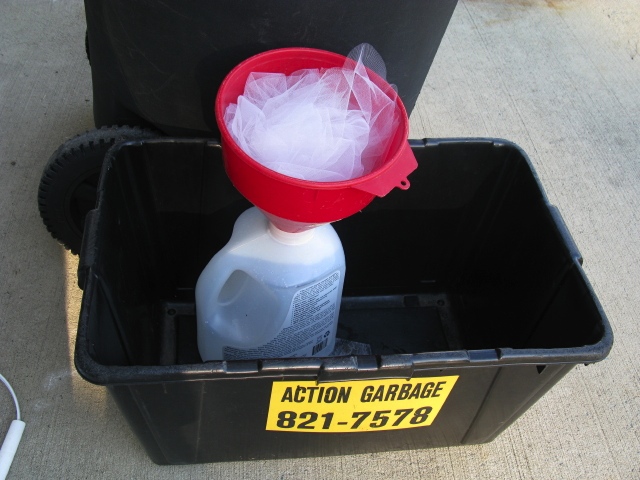
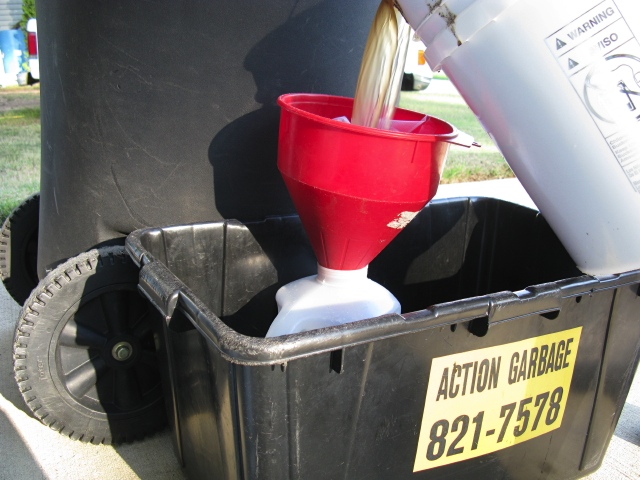
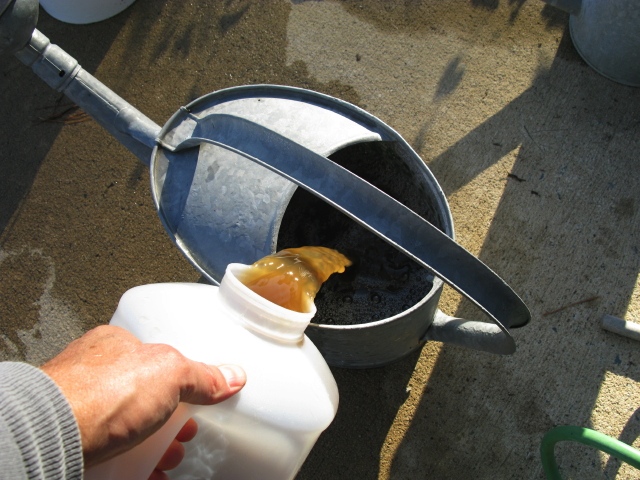
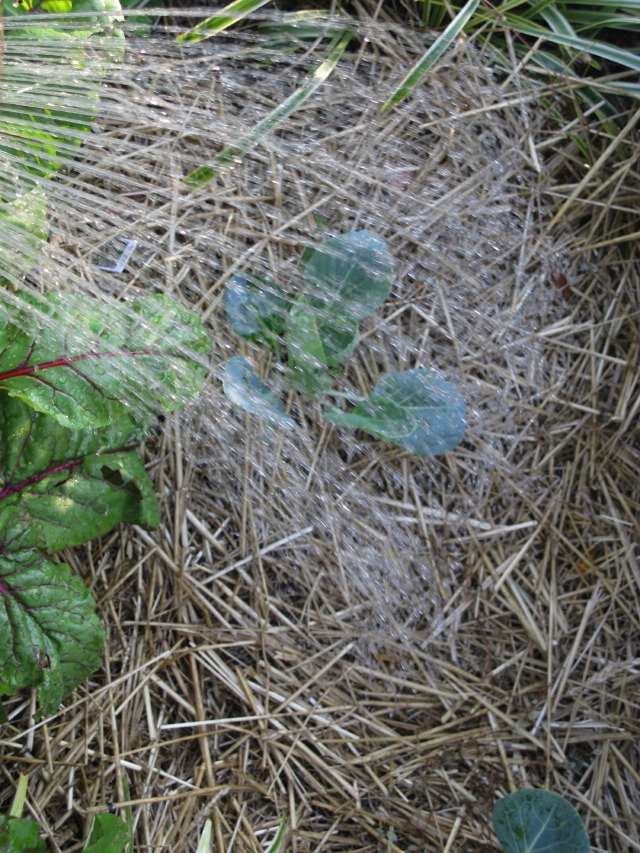
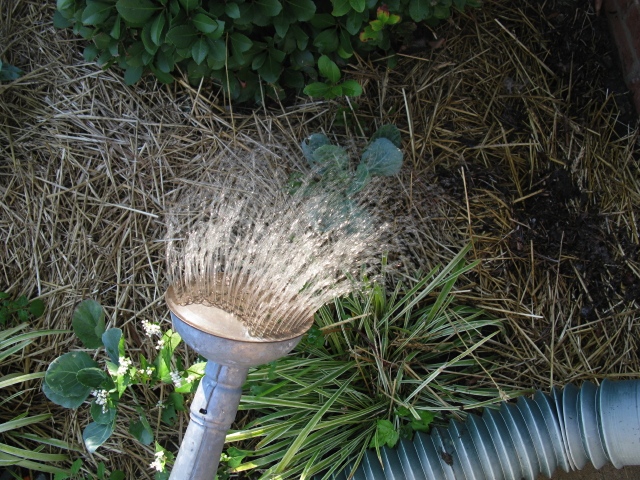
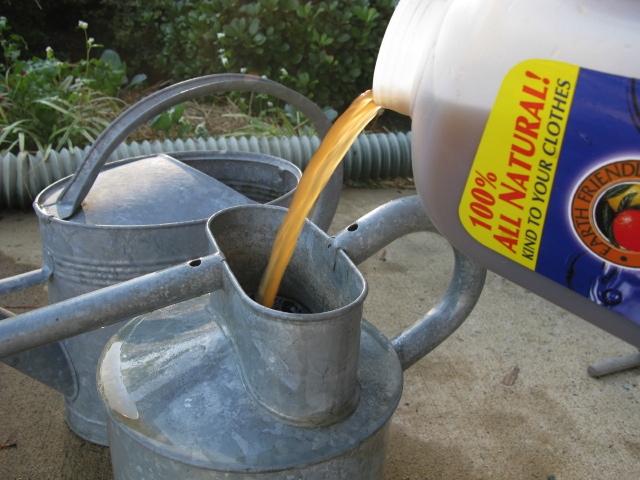
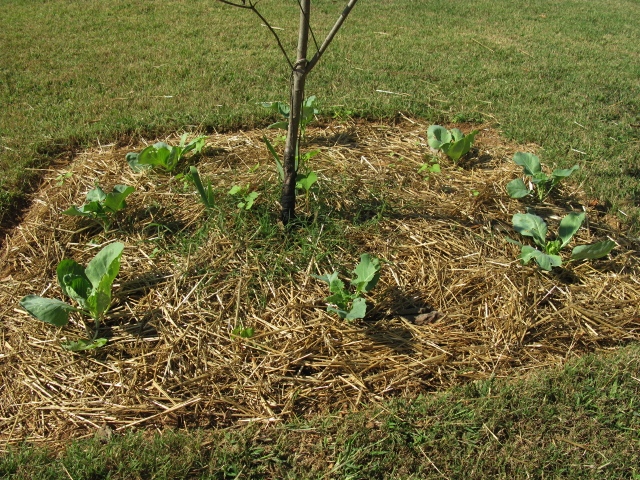
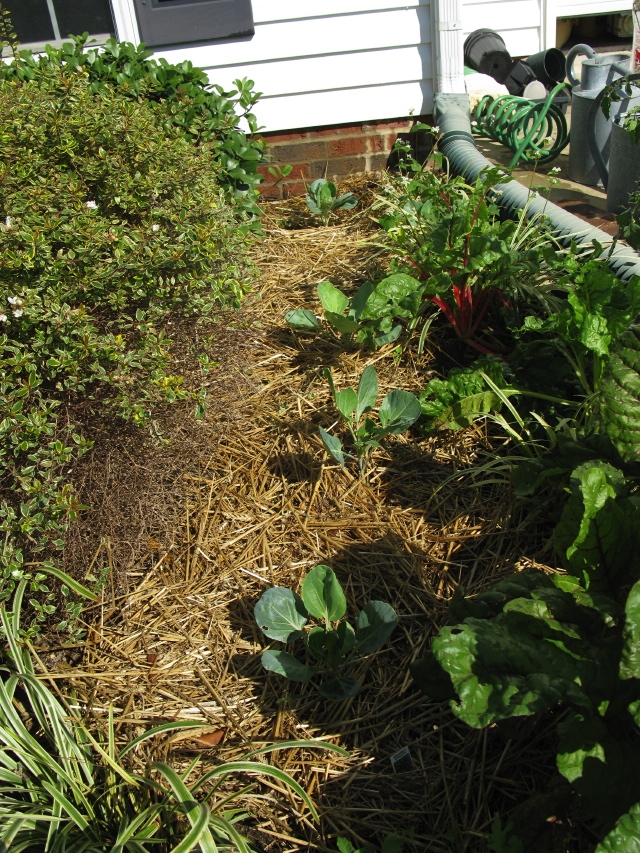
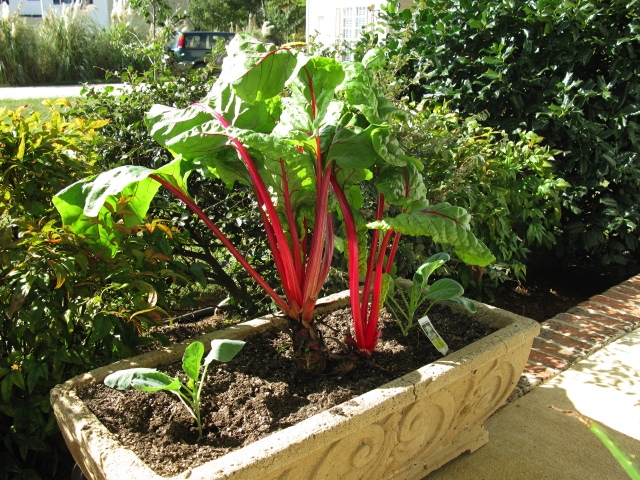
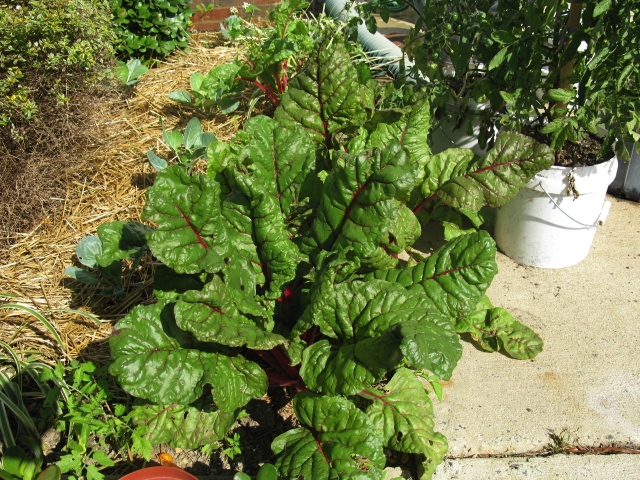
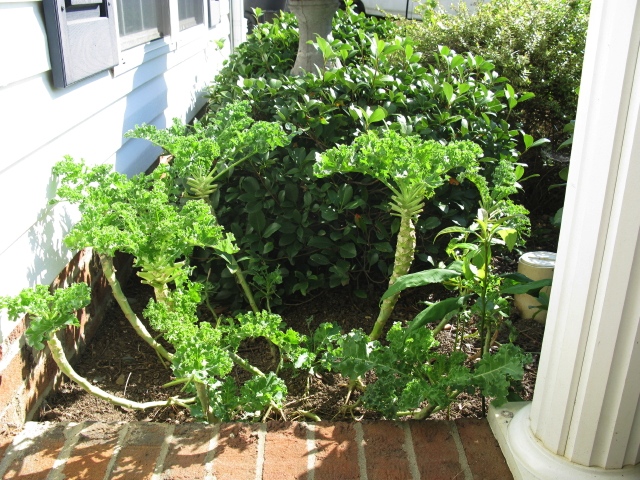
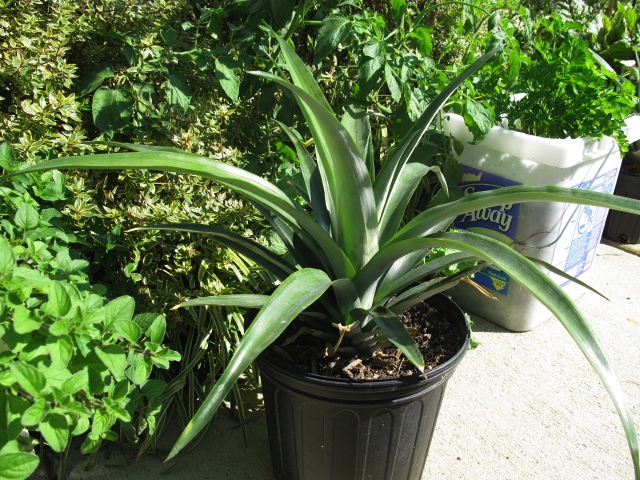






Man, your chard look awesome. Thanks for the good description and pics/videos for compost tea. If you ever get the hankering to video the difference between your hand pump and fine mist spayers I'd love to see it. Maybe you can show me next time we're up that way.
ReplyDeleteDaniel
*A note to any unbelievers on John Evans success. A common response to his success is to cite longer more intense sun and other extra-compost tea conditions. But his reply is simply that if that were the case others in his climate/conditions would be growing size/brix record plants. And they're not. It does seem his compost tea efforts have been a critical part of his extraordinary success.
By the way, your pump is generating far more air into two 5-gallon buckets than mine will in one. I'm going to check the features on our pump but am curious about yours. Is there any kind of measure of power on your pump? The bubbles are really strong and volatile in your tea. Have you ever read recommendations for pump size/power?
ReplyDeleteDaniel
Re: the air pump/power -- I mean to say in the post that I think I may be adding to much oxygen -- i.e., that the pump is too strong. I originally bought the pump to aerate three 33-gallon containers at a time, one air stone per container, at that produced a quieter, nicer roll of bubbles on the surface than the same amount of air in these small 5-gallon buckets. I looked this morning online for a three-way gang valve with adjustable outtakes that would let me regulate the amount of air going into the buckets but couldn't find one to fit my size tubing. But I have another idea to try -- bottom line, no I don't know what the idea amount of air for feeding bacteria is. The only way to determine any of this is be expensive testing -- bacterial counts, etc. -- based on all existing variables: oxygen flow, nutrients added, brew time, etc. And those tests aren't cheap -- so I just do whatever seems best.
ReplyDeleteOn the sprayers, I'm afraid to try the tea in the mister for fear of clogging it unless I can find a way to filter out finer particles than the tule will catch. I have used the mister to apply BT and it works well.
Jeepers -- pardon the several typos in the above post.
ReplyDeleteThe pump I bought a few years ago is here: http://tinyurl.com/yzwuxa5
ReplyDeleteI think it's the model LT-15 (34 watts at 2 psi)